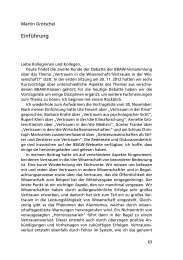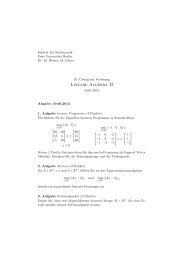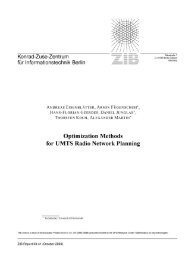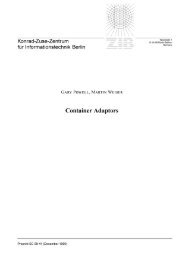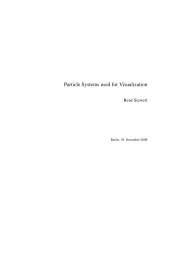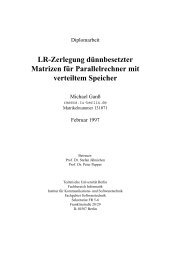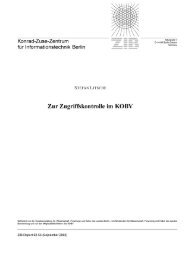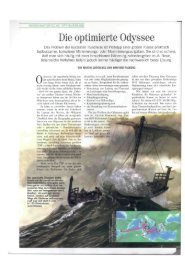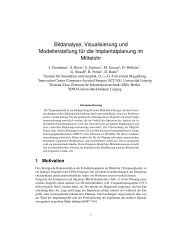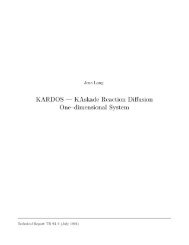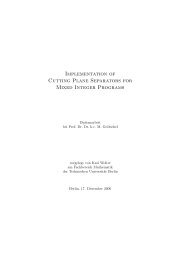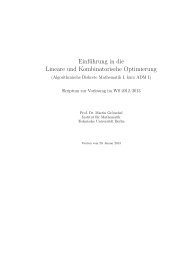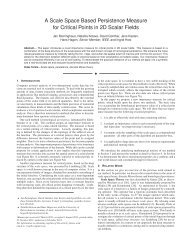SC-90-09.pdf - ZIB
SC-90-09.pdf - ZIB
SC-90-09.pdf - ZIB
You also want an ePaper? Increase the reach of your titles
YUMPU automatically turns print PDFs into web optimized ePapers that Google loves.
Indeed (1.6) follows from (1.21) by taking z — y and u = x + s(y — x), while<br />
(1.12) follows from (1.21) for z = x and u = x + s(y — x). Let u, x € D<br />
and denote by L the line containing u and x, and by L\ the half line of origin<br />
u, contained in L but not containing x. Assumption (1.6) says that (1.21) is<br />
satisfied only for z € L\ and not necessarily for all z £ L. However, we will<br />
prove that in case F is twice Frechet differentiate assumptions (1.6) and (1.21)<br />
are equivalent. First note that if F is twice Frechet differentiate then, by<br />
dividing both sides of (1.6) by s, and then setting s —* 0, we obtain<br />
\\F'( y )- 1 F"(x)(y-xY\\(u) - F'(x))(u -x)\\< »J llZ {~* { ly 2 dt<br />
which proves that (1.21) is satisfied.<br />
l<br />
= u 1 \\u - x\\ 2 dt = u\\u -x\\ 2 ,<br />
o<br />
6



